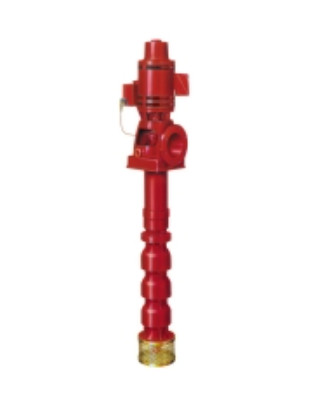Fire Pumps
Fire Pumps are an integral part of many water-based fire protection systems. They are used to increase the pressure of the water source when the source is not adequate for the system it’s supplying. These are commonly found in building that have a high pressure demand such as high-rises or storage warehouses. Several of the most common types of fire pumps are listed below. Accurate can repair and install all types of Fire Pumps.
There are many different types of fire pumps available. It is important to select the correct type of pump for your specific project. If you don’t take all the key factors into consideration, it could cause undesirable results.
There are two main categories of pumps: Positive Displacement and Centrifugal.
Positive Displacement Pumps are pumps that are characterized by a method of producing flow by capturing a specific volume of water per pump revolution and pushing it out through the discharge line. Positive displacement pumps create very high pressure but have limited flow volume compared with centrifugal pumps. These are not as common because they have a specified use, primarily with water mist and foam water systems.
Centrifugal Pumps are the most common fire pumps and are used with most systems. With centrifugal pumps, pressure is developed principally by the action of centrifugal force of spinning. Water in centrifugal pumps enters the suction inlet and passes to the center of the impeller. The rotation of the impeller, in turn, drives the water by centrifugal force to the rim where it discharges Centrifugal pumps can handle large volumes of water while providing high pressure boosts.
Horizontal Split-Case Pump
A horizontal split-case pump, the flow is split and enters the impeller from opposite sides of the pump housing. As the name implies, this is a pump installed with a split casing that can be opened for pump maintenance access and is connected to the driver by a horizontal shaft.
This type of pump can be very reliable, and come in a wide range of rated flow and pressure capacities, they are easy to maintain due to their relatively easy split-case accessibility. They can be used with both electric and diesel drivers.
Vertical Turbine Pump
A Vertical Turbine Pump is the only pump allowed by NFPA 20, Standard for the Installation of Stationary Pumps for Fire Protection. It can start with negative suction pressure or take water under a lift condition such as from a below grade source such as a river of subgrade tank. These pumps can be used with raw water sources such as ponds, lakes and rivers. Vertical turbine pumps come in a vide range of capacities and pressures, and they can be used with diesel and electric drivers.
In-Line Pump
In-Line Pumps are great for where space is limited. These can be driven by both a vertical or horizontal shaft (end suction type), which are the most common. They have the driver located directly above the pump. These are typically one of the less expensive units and take the least amount of space. With these pumps, the suction flange and discharge flange are on approximately the same plane. In-line pumps have a limited capacity of typically no more than 1,500 gpm and they can only be used with electric driver which limited their potential applications.
End Suction Pump
An end suction pump has a discharge outlet perpendicular to the suction inlet. These pumps are typically limited to a capacity of 1,500 (5,678 L/min) . Compared to horizontal split-case fire pumps, they are most compact and require less installation space in a fire pump room. End suction pumps can be used with either and electric driver or a diesel driver. This type of pump is good for schools, office building, hospitals.
Accurate offers Design Build Installation for Fire Pump Systems. Accurate can repair and install all brands of fire pump systems. Including Sales, Service, Maintenance and Repairs. If you need Annual, Semi Annual and Quarterly Inspections. We can set up a schedule for your special needs.
Accurate offers a full range of Fire Protection Equipment and Services for Commercial, Retail, Restaurants, Industrial Schools, Hotels, Nursing and Care Facilities, Hospitals, Day Care Facilities, Churches, Theaters, Shopping Malls, and Residential Customers.





